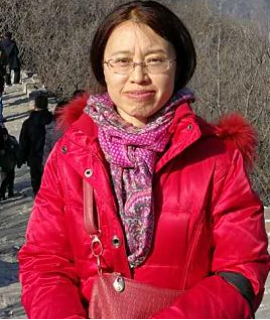Title : Removal of airborne dust and associated metals by plant leaves
Abstract:
As the capital of China, Beijing is continuously exposed to high amount of airborne dust, thus it is necessary to find improvement methods. As an ecological and friendly way in improving air quality, phytoremediation were investigated in three aspects: (1) 32 urban plant species leaves were investigated in removing airborne dust and its associated metals on Beijing roadside sites in autumn, with Metal Accumulation Index (MAI) values calculated. Results showed that leaves could remove dust from 0.510 to 23.0 g m–2 with an overall mean of 7.50 g m–2. Plant species with dust accumulation rate above the mean including Koelreuteria paniculata, Ulmus pumila, Syringa oblata, Malus micromalu, Weigela florida cv. Red Prince, Ailanthus altissima, Salix babylonica, Robinia pseudoacacia, Ligustrum × vicaryi, Euonymus japonicus, Prunus cerasifera f. atropurpurea, Magnolia denudata, and species with higher MAI values including Amygdalus persica, Magnolia denudata, Syringa oblata are suggested to be considered in future green belt planning in Beijing. (2) To provide more insight into the removal ability of urban air dust and associated metals by plant leaves, above 15 plant species leaves were analysed for size fractions of leaf surface dust (SD) and inner wax dust (WD). Seven associated metals Cd, Cr, Cu, Fe, Mn, Pb and Zn were also measured and MAI was calculated for different species leaves at various dust sizes and soluble forms respectively. In result, most species leaves collected larger ratios of SD than WD. Whilst SD was presented at all particle size fractions for all plants, nearly all species leaves collected higher proportions of WD>10 µm. Metals were observed in all sizes of SD/WD. (3) To search a new way of evaluating the long-term pollution situation of airborne particles, concentrations of leaf surface dust and associated metals (Cd,Cr, Cu, Mn, Ni, Pb, Zn) of five common plant species were investigated at seven sampling sites in Beijing. MAI of leaf surface dust was also calculated, and comparison was made between our leaf surface data and the particulate observation data from adjacent air monitoring stations through statistical analyses. As a result, leaf SD concentration of Ulmus pumila can quantitatively evaluate monthly mean PM10 mass with relative error of 1.2-10.6%, whilst leaf dust data of Ailanthus altissima can assess monthly mean PM2.5 mass with relative errors as 0.18-3.7%. The MAI value can be used as an indicator for overall airborne dust metal pollution. (4) To understand micro morphological mechanism of leaf dust and associated metals removal, leaves of 9 landscaping tree species were collected from roadside of Beijing and studied for their micro-morphological (stoma, epidermal hair, etc.,) features with Environmental Scanning Electron Microscope (ESEM) as well as associated particulate matters (PMs) using Energy Spectrometer (EDS). The result shows that leaves of plants were one of the main means/ways/channels to retain airborne PMs and the retention abilities were various due to differences of their epidermal micro structures.



